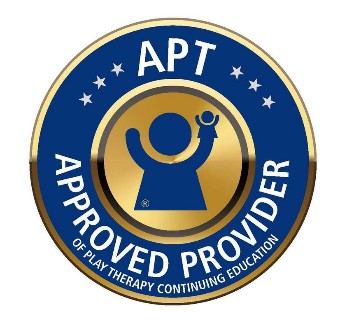Body-Centered Play Therapy for Traumatized Clients
Learn body-centered play therapy techniques for assessing and intervening with traumatized clients.
Description
In this interactive in-person workshop, we will explore ways to incorporate body-centered techniques, such as yoga, movement, body scans, parasympathetic nervous system soothing, and sensorimotor drawing, with traumatized clients in play therapy. Much of the current research investigating therapeutic work with traumatized clients suggests that some of the most effective therapy tools are body-centered techniques such as yoga, meditation, movement, body scans, and work with the parasympathetic nervous system. Researchers have noted that the body stores trauma in a variety of different ways which makes it particularly important to help traumatized clients become more aware of and more able to work with their bodies, in addition to the familiar play therapy goals of working with emotions, cognitions, and behaviors. Using a combination of Adlerian conceptualization and strategies and body-centered Gestalt therapy techniques, we will explore how trauma affects clients across the lifespan and how you can integrate body-centered intervention strategies, and expressive arts techniques into your play therapy practice. The workshop is designed to equip you with body-centered play therapy techniques that, without physically touching clients, you can use for assessment and intervention with clients who have experienced trauma.
 12 CE hours (Contact) (Includes 4 hours on Play Therapy Special Topics, 2 hour on Play Therapy Seminal or Historically Significant Theories, and 6 hours on Play Therapy Skills and Methods)
12 CE hours (Contact) (Includes 4 hours on Play Therapy Special Topics, 2 hour on Play Therapy Seminal or Historically Significant Theories, and 6 hours on Play Therapy Skills and Methods)
APT Approved Provider 99-055

League of Extraordinary Adlerian Play Therapists (LEAPT) has been approved by NBCC as an Approved Continuing Education Provider, ACEP No. 7402. Programs that do not qualify for NBCC credit are clearly identified. League of Extraordinary Adlerian Play Therapists (LEAPT) is solely responsible for all aspects of the programs.
Agenda
Agenda - Both days
8:30 AM Start
10:30 AM Break (15 Minutes)
12:00 PM Lunch
1:20 PM Start afternoon
2:45 PM Break (15 minutes)
4:30 PM End
Objectives
Objectives:
By the end of this workshop, participants will be able to…
- Describe current research on the effects of trauma on people’s brains, bodies, thoughts, emotions, and behavior.
- Explain why enhancing play therapy clients’ sensorimotor awareness can be important with traumatized clients.
- Identify 5 techniques to enhance play therapy clients' sensorimotor awareness.
- Describe 2 Adlerian play therapy conceptualization tools for understanding how trauma has had an impact on clients’ lifestyles.
- Explain the difference between the parasympathetic nervous system and the sympathetic nervous system.
- Describe 5 strategies for activating clients' parasympathetic nervous system.
- Describe 3 principles of trauma-informed therapy with children and adolescents.
- Describe the process of using sensorimotor art processes and/or sensory image drawings with traumatized clients in play therapy
- Name 2 therapeutic powers of play that are important when working with traumatized clients.
- List 2 symptoms of trauma in school-aged children.
- Explain how a play therapy client’s culture might influence the impact of a traumatic experience on the client.
- Name 2 domains of development in play therapy clients that can be impacted by trauma.